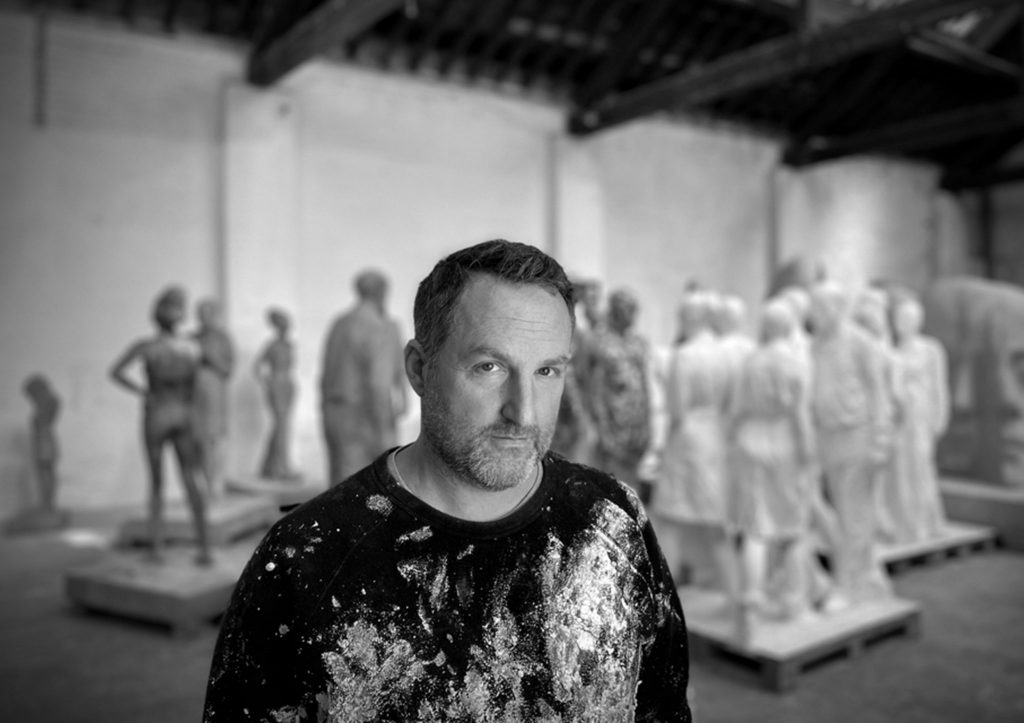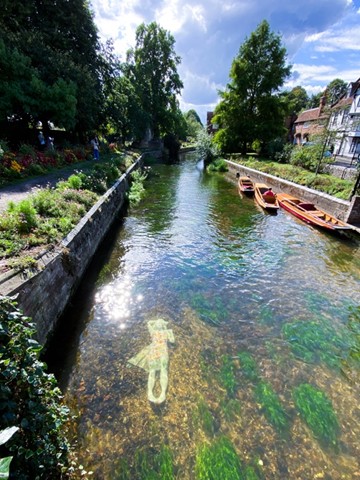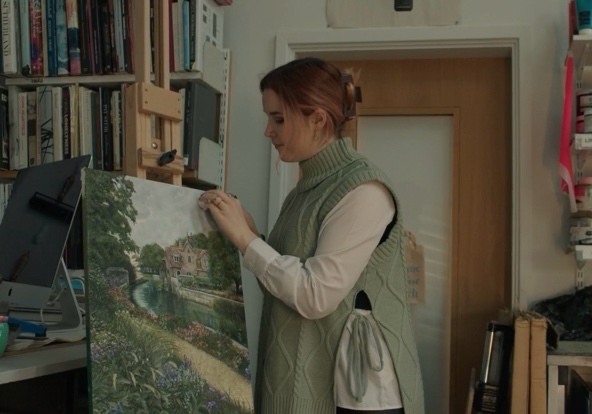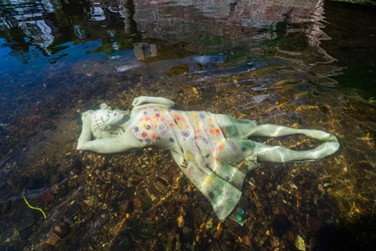Our thanks to Heather Murdoch (BA (Hons) English Literature 2023 and MA Visual Communication 2024) for this alumni blog post. Heather was lucky enough to meet and interview Jason deCaires Taylor, an award winning sculptor, environmentalist and professional underwater photographer.
‘Strolling through Canterbury’s Westgate Gardens, you might catch a glimpse of the new local druid resting on the riverbed. Don’t attempt to salvage her though – rest assured, she’s quite happy down there.
I’m Heather Murdoch, a recent alumna of CCCU after graduating with a BA in English Literature and an MA in Visual Communication. I know, what are the odds. But my split passion between art and literature has rendered me quite the handy assistant for Kent Maps Online, whom I’ve worked with for a couple of years now, mainly on creative-based projects to illustrate texts or promote events. This time however, I was chosen to interview the internationally renowned artist Jason deCaires Taylor following the unveiling of his hauntingly beautiful ‘Alluvia’ statue. And I felt privileged to say the least.

Located in Canterbury’s River Stour, this landmark, or, watermark, was inspired by Sir John Everett Millais’s celebrated Ophelia painting in 1852 (cue the ears of all art/literary lovers to prick up, as mine did).
The interview was conducted at ‘Creek Creative’: a quaint, artsy café situated next to Taylor’s Studio in Faversham. I knew I was in the right place after being greeted by one of his statues at the entrance (taking quite a beating in the torrential rain), before meeting him and Carolyn who, much to my delight, were immersed in a discussion about the 1980s rave scene.
After meeting up, catching up, and being very much bigged-up by Carolyn, we delved right into the depths of what we all had in common: art. I expressed my adoration of multi-media and was intrigued to hear all about the materials behind Taylor’s sculptures.
For example, the installations are created using low carbon, PH-neutral materials to provide habitat for marine life and, in turn, help to rebuild ecosystems. They also divert tourists away from particularly fragile spots that are affected by, well, tourists… in hopes of providing some breathing room for restoration.
So the artwork represents humanity reaching out to nature. But equally important is the way the sculptor allows nature to reach back. For example, ‘Alluvia’ is made out of recycled glass and marine stainless steel, but she is also set in a resin in order for the sand to move back into the glass as erosion takes place. In Taylor’s own words, “the marine life completes the sculptures”.
“Over time, reeds will grow around her, algae will form a natural patina, and she will be subject to the river’s ebb and flow – both in water levels and clarity” – Jason deCaires Taylor.
‘Alluvia’ was inspired by Shakespeare’s Ophelia, but what’s in a name? According to Taylor’s website, ‘Alluvia’ refers to the “alluvial deposits of sand left behind by the rise and fall of the river’s water levels”. The sculpture is also illuminated at night by golden LED lights and is fitted with sensors that record the surrounding water conditions. So the purpose is very much an integration between contemporary art and environmental conservation.

However, ‘Alluvia’ gained a range of responses and, like many of Taylor’s works, sparked controversy. He recalled a 2018 installation being smashed up by the Maldivian authorities, who believed that the human-like figures represented idols which, as a result, violated Islamic beliefs. Some suggested that ‘Alluvia’ evokes suicide or even migrant deaths in the English Channel, a subject which, Taylor added, “certainly deserves more empathy and attention”. But that’s the point of art, isn’t it? To provoke thought and feeling? The artist clarified that his intention is “not to divide”, but to welcome thoughtful questions and interpretations.
Taylor also highlighted the need to acknowledge mankind’s fragility compared to the natural world. We have no power over it, we are part of it. And like the Ophelia, ‘Alluvia’ is completely at the mercy of nature yet also one with water – a duality that is tragically beautiful. Humanity may be part of the problem, but we can also work towards the solution.
After the coffee, Carolyn and I were lucky enough to be invited back to the studio where we could see the works in the flesh (or, should I say, stone). It may as well have been Medusa’s lair; picture a crowd of humanoid sculptures – some frozen in dynamic poses, some just standing there gaping. It was rather eerie I’ll admit. But amongst them were two graffiti-covered lions which stood out not only because they were the only animal sculptures, but also because they were the only ones in colour. They are, according to Taylor, a “physical manifestation of the effects of Brexit, a collective moment of self-harm that has been inflicted upon us through lies and propaganda, financed by a wealthy, unaccountable elite”. While the lions are a proud symbol of the United Kingdom, the graffiti represents the juxtaposing opinions surrounding ‘what it means to be British’ and the corruption caused as a result. So Taylor’s work is capable of making us think, hope, despair, and in this case, want to scream. His collaborations with nature remind us that unity will always thrive over division; sometimes the truth lies just beneath the surface.

You can read Heather’s article about ‘Alluvia’ on Kent Maps Online – an interactive Digital Humanities project exploring the county’s rich heritage, using multi-disciplinary lenses to research and present historic, literary and geographical records. Travel through the site and find answers to questions you haven’t even thought of yet. You can toggle between maps and images in the right hand pane of each essay.
 Alumni
Alumni Celia Pearce
Celia Pearce 124
124


